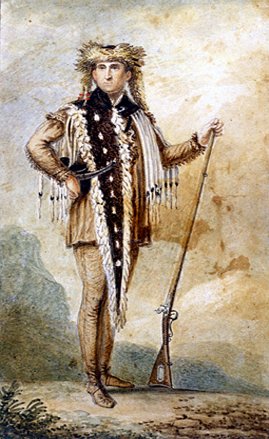Tippet
Tippet refers to a scarf-like narrow piece of clothing, worn over the shoulders. Historically, tippets evolved in the 14th century from long sleeves and typically had one end hanging down to the knees. The term has been used in various contexts within the fashion and religious attire throughout the centuries. In modern times, the tippet is often associated with ecclesiastical dress, particularly within the Anglican Communion, where it is a long, scarf-like garment worn over the surplice by clergy and choristers.
History[edit | edit source]
The origin of the tippet can be traced back to the medieval period, where it was part of the secular wardrobe. Initially, it was a piece of cloth attached to the hood or collar that could be wrapped around the neck and shoulders for warmth. Over time, the tippet evolved into a more decorative accessory, often elaborately embroidered or made of luxurious materials for the upper classes.
In the 16th century, the tippet became part of the academic dress in England, particularly at the University of Oxford and the University of Cambridge. It was a mark of scholarly achievement and status. This tradition continues today, with the tippet forming part of the academic regalia in many universities worldwide.
Ecclesiastical Use[edit | edit source]
In the context of ecclesiastical attire, the tippet has a specific significance and design. It is usually made of black silk or wool and is worn over the surplice. The length and style of the tippet may vary, but it typically reaches down to the knees. In the Anglican Church, the tippet is often adorned with the wearer's academic hood, signifying their university degree.
The tippet is distinct from the stole, another liturgical vestment, which is a symbol of ordained ministry. The tippet, by contrast, can be worn by both ordained and lay members of the choir, making it a versatile piece of ecclesiastical attire.
Symbolism[edit | edit source]
The tippet carries different symbolic meanings depending on the context in which it is worn. In academic settings, it represents a connection to the scholarly tradition and academic achievements. In religious settings, it may symbolize the wearer's commitment to their faith and their role within the church community.
Modern Usage[edit | edit source]
Today, the tippet remains a significant element of dress in certain contexts. In the Anglican Church, it is a common part of choir dress and is also worn by clergy in liturgical services, especially in more traditional or formal settings. It continues to be a part of academic regalia in universities, symbolizing academic authority and achievement.
See Also[edit | edit source]
Search WikiMD
Ad.Tired of being Overweight? Try W8MD's NYC physician weight loss.
Semaglutide (Ozempic / Wegovy and Tirzepatide (Mounjaro / Zepbound) available. Call 718 946 5500.
Advertise on WikiMD
|
WikiMD's Wellness Encyclopedia |
| Let Food Be Thy Medicine Medicine Thy Food - Hippocrates |
Translate this page: - East Asian
中文,
日本,
한국어,
South Asian
हिन्दी,
தமிழ்,
తెలుగు,
Urdu,
ಕನ್ನಡ,
Southeast Asian
Indonesian,
Vietnamese,
Thai,
မြန်မာဘာသာ,
বাংলা
European
español,
Deutsch,
français,
Greek,
português do Brasil,
polski,
română,
русский,
Nederlands,
norsk,
svenska,
suomi,
Italian
Middle Eastern & African
عربى,
Turkish,
Persian,
Hebrew,
Afrikaans,
isiZulu,
Kiswahili,
Other
Bulgarian,
Hungarian,
Czech,
Swedish,
മലയാളം,
मराठी,
ਪੰਜਾਬੀ,
ગુજરાતી,
Portuguese,
Ukrainian
Medical Disclaimer: WikiMD is not a substitute for professional medical advice. The information on WikiMD is provided as an information resource only, may be incorrect, outdated or misleading, and is not to be used or relied on for any diagnostic or treatment purposes. Please consult your health care provider before making any healthcare decisions or for guidance about a specific medical condition. WikiMD expressly disclaims responsibility, and shall have no liability, for any damages, loss, injury, or liability whatsoever suffered as a result of your reliance on the information contained in this site. By visiting this site you agree to the foregoing terms and conditions, which may from time to time be changed or supplemented by WikiMD. If you do not agree to the foregoing terms and conditions, you should not enter or use this site. See full disclaimer.
Credits:Most images are courtesy of Wikimedia commons, and templates, categories Wikipedia, licensed under CC BY SA or similar.
Contributors: Prab R. Tumpati, MD

